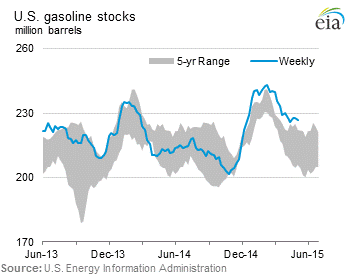Crude Oil managed to show a net draw from the Cushing storage facility, in a move that has the markets in a tizzy. Crude Oil inventories showed a net draw of 2.19 million barrels, suggesting that the crude imbalance is now moving through the supply chain. However, the result fails to take into account diminished demand for the physical petroleum product or the fact that refinery margins have now become razor thin.
Rebalancing of the US domestic crude supply is a slow process which is further complicated by government export regulations. Rig shutdowns and shuttering within the domestic market have actually moved along at a much faster pace than expected, but demand is still lackluster. The market is betting on a strong US driving season to push WTI prices higher in the coming months.
However, there is a risk that the oil rally will be self-defeating, as rig operations are restarted within the $65.00 range leading to further oversupply. On the international front, OPEC has been ruminating for price increases whilst at the same time presiding over increasing crude supplies from members. Saudi Arabian and Iraqi production actually increased, by over 1.0m/bpd, despite no change in global fundamental demand. This has led many to consider OPEC’s statements as nothing but attempts to alter the market's expectations.


One of the reasons for the strong rally has been the fact that crude oil is currently viewed as cheap when compared to E&P equities. This has caused a flood of speculative capital to flow into the commodity, further increasing the disconnect between the physical stock and futures prices. Whilst the Crude Oil rally has partially closed the valuation gap, E&P equities still trade at shockingly high multiples, further increasing buying pressure despite the weak global fundamentals.
Notwithstanding the increased draw of crude from the Cushing stockpile, GS analysts suggest that their modelling shows a net oversupply of 1.9m/bpd throughout Q2, 2015. This analysis suggests that an inventory build is likely in the coming months, whether it be in crude stocks or within petroleum storage.
Ultimately, crude has not yet rebalanced and any further upward movement in price is only going to fuel increased domestic production and a significant build to the crude inventories. The rebalancing process is not occurring quickly and slipping domestic demand isn’t helping.
Even within the global markets supply imbalances are occurring, with Saudi Arabia increasing their rig counts dramatically, whilst Angolan and Nigerian oil waits for delivery dates. Subsequently, the divergence or disconnect between crude oil fundamentals and futures prices is increasing and this leads me to believe that a correction must occur in the near term.
